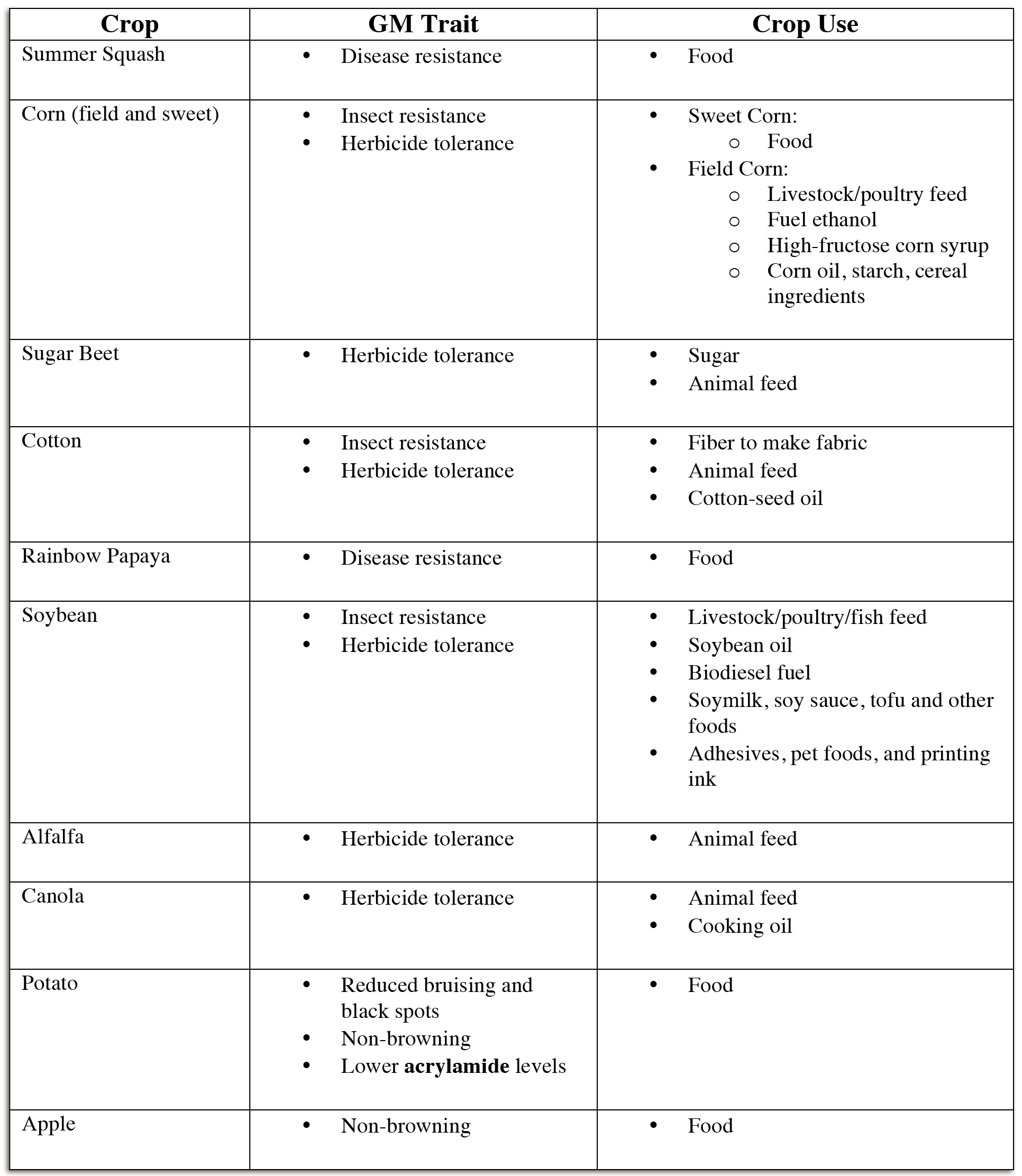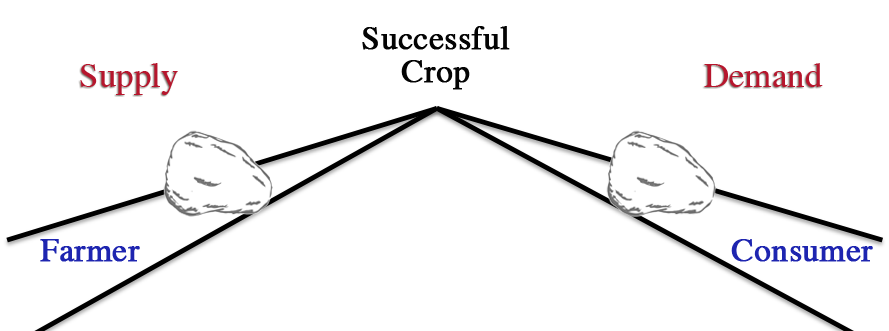Evaluating Perspectives About GMOs
While many view bioengineered crops (GMOs) as a promising innovation, there is controversy about their use. This lesson provides students with a brief overview of the technology, equipping them with the ability to evaluate the social, environmental, and economic arguments for and against bioengineered crops (GMOs). This lesson covers a socioscientific issue and aims to provide students with tools to evaluate science within the context of social and economic points of view.

Background
Lesson Activities
Recommended Companion Resources
Credits
Author
Andrea Gardner | Minnesota Agriculture in the Classroom and National Agriculture in the Classroom Organization (NAITCO)
Acknowledgements
Ann Butkowski, science teacher at Humbolt High School in St. Paul, MN wrote the original lesson for the Minnesota Agriculture in the Classroom program in 2013. The lesson was rewritten and updated in 2016 by National Agriculture in the Classroom.
The Critically Thinking GMOs worksheet was developed using the concepts taught in the NSTA publication of Making Critical Friends, written by Sara Raven, Vanessa Klein, and Bahadir Namdar.
Sources
- Recent Trends in GE Adoption | USDA Economic Research Service
- GMOs and Pesticides: A Match Made in Heaven? | Science in the News, Harvard University
- GLP Infographic: International Science Organizations on Crop Biotechnology Safety | Genetic Literacy Project
- 87% of Consumers Globally Think Non-GMO Is 'Healthier' | FoodNavigator-USA
- Mutagenesis as a Tool in Plant Genetics, Functional Genomics, and Breeding | International Journal of Plant Genomics
- The Nature of GMOs | Food and Agriculture Organization of the United Nations
- History of Genetic Engineering | Wikipedia
- Flavr Savr | Wikipedia
- U.S. Regulation of Genetically Modified Crops | Federation of American Scientists
- Biotechnology FAQs | U.S. Department of Agriculture
- Mythbusting 101: Organic Farming > Conventional Agriculture | Scientific American
- Organic Food Industry Explodes as Consumer Demand Spikes | EcoWatch
- Evolving Understanding of the Evolution of Herbicide Resistance | Pest Management Science
Standards
Indiana Content Area Standards
-
Health and Wellness: Standard 2
Students will analyze the influence of family, peers, culture, media, technology, and other factors on health behaviors.
- 12.2.3 Health and Wellness: Evaluate the effect of media on health behaviors.
-
Geography and History of the World: Innovations and Revolutions: Standard 6
Students examine physical and human geographic factors that influenced the origins, major events, diffusion, and global consequences of new ideas in agriculture, science, culture, politics, industry, and technology.
- GHW.6.5 Innovations and Revolutions: Analyze and assess the impact of the four major agricultural revolutions on the worlds human and physical environments.
-
English Language Arts.Grade 9-10.RN.1
Read a variety of nonfiction within a range of complexity appropriate for grades 9-10. By the end of grade 9, students interact with texts proficiently and independently at the low end of the range and with scaffolding as needed for texts at the high end of the range. By the end of grade 10, students interact with texts proficiently and independently.
- Key Ideas and Textual Support.9-10.RN.2.1: Analyze what a text says explicitly as well as inferences and interpretations drawn from the text by citing strong and thorough textual evidence.
-
English Language Arts.Grade 9-10.SL.1
Listen actively and adjust the use of spoken language (e.g., conventions, style, vocabulary) to communicate effectively with a variety of audiences and for different purposes.
- Discussion and Collaboration.9-10.SL.2.1: Initiate and participate effectively in a range of collaborative discussions on grade-appropriate topics, texts, and issues, building on others ideas and expressing personal ideas clearly and persuasively.
- Presentation of Knowledge and Ideas.9-10.SL.4.1: Present information, findings, and supporting evidence logically so that listeners can follow the line of reasoning, ensuring organization and development are appropriate to purpose, audience, and task.
-
English Language Arts.Grade 11-12.RN.1
Read a variety of nonfiction within a range of complexity appropriate for grades11-CCR. By the end of grade 11, students interact with texts proficiently and independently at the low end of the range and with scaffolding as needed for texts at the high end of the range. By the end of grade 12, students interact with texts proficiently and independently.
- Key Ideas and Textual Support.11-12.RN.2.1: Analyze what a text says explicitly as well as inferences and interpretations drawn from the text by citing strong and thorough textual evidence to support and explain how the evidence develops the analysis.
-
English Language Arts.Grade 11-12.SL.1
Listen actively and adjust the use of spoken language (e.g., conventions, style, vocabulary) to communicate effectively with a variety of audiences and for different purposes.
- Discussion and Collaboration.11-12.SL.2.1: Initiate and engage in a range of collaborative discussions on grade-appropriate topics, texts, and issues, building on others ideas and expressing personal ideas clearly and persuasively.
- Presentation of Knowledge and Ideas.11-12.SL.4.1: Using a range of informal and formal tasks, present information, findings, and supporting evidence, conveying a clear and distinct perspective, such that listeners can follow the line of reasoning, address opposing perspectives, ensuring the organization, development, substance, and style are appropriate to purpose, audience.



